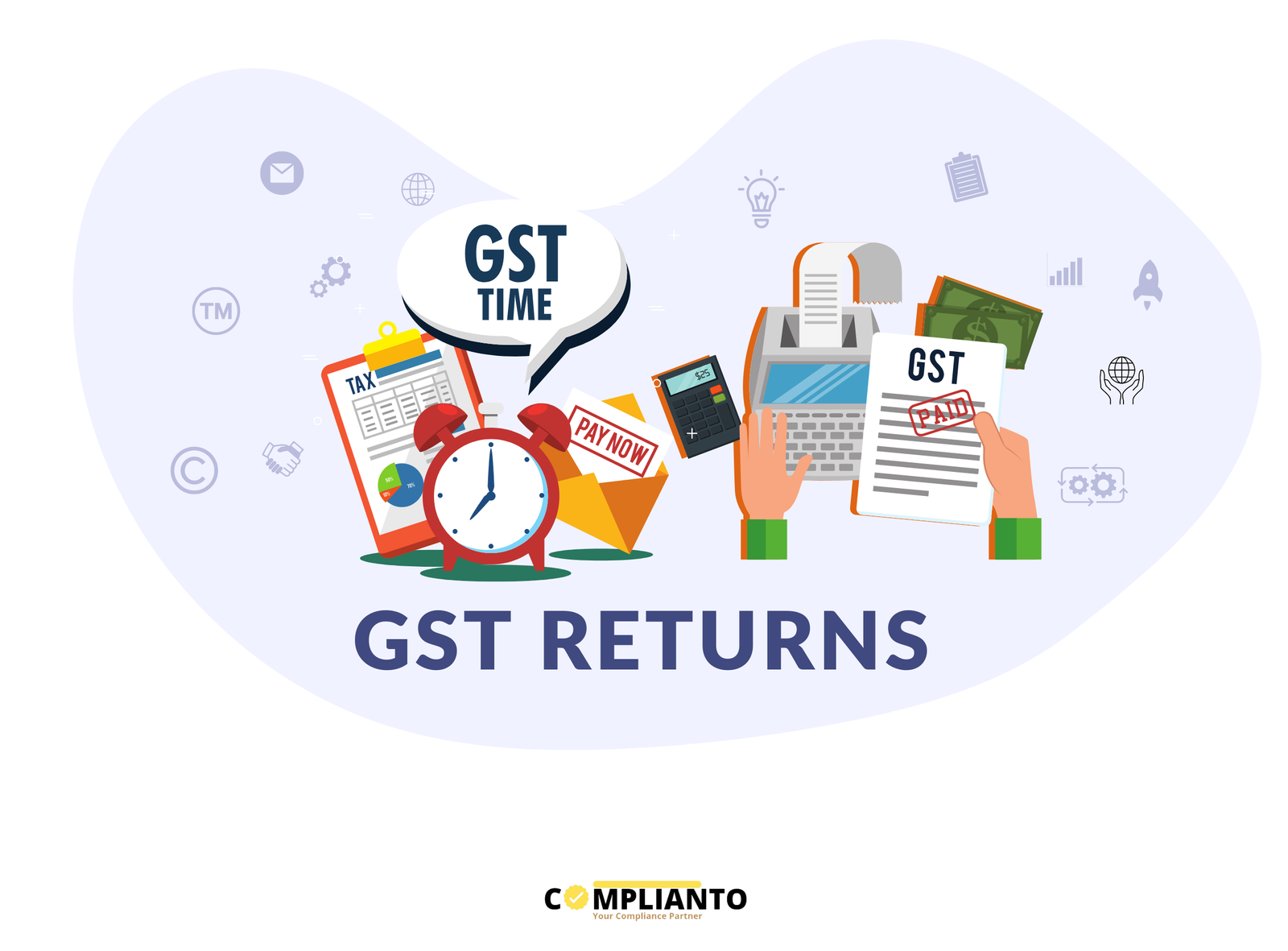| GSTR1 | GSTR3B | GSTR4 |
|---|---|---|
| Return for Outward Supplies GSTR-1 is a monthly return of outward supplies (sales) undertaken by a normal registered taxpayer under GST. For taxpayers having turnover below 1.5 crore have an option to file quarterly return. Due Date: 11th of following month 13th of the month following every quarter |
Summary of Inward and Outward Supplies GSTR-3B is a monthly self-declaration to be filed, for furnishing summarised details of all outward supplies made, input tax credit claimed, tax liability ascertained and taxes paid. GSTR-3B is to be filed by all normal taxpayers registered under GST. The sales and input tax credit details must be reconciled with GSTR-1 and GSTR-2B every tax period before filing GSTR-3B. Due Date: 20th of following month Quarterly, 22nd of the month following the quarter for ‘X’** category of States and 24th of the month following the quarter for ‘Y’** category of States |
GSTR-4 is the annual return that was to be filed by the composition taxable persons under GST, by 30th April of the year following the relevant financial year. A business who opt for composition scheme and needs to pay to subsidize GST rates from 1% to 5% & file this annual return |
| GSTR5 | GSTR5A | GSTR6 |
|---|---|---|
| GSTR-5 is the return to be filed by non-resident foreign taxpayers, who are registered under GST and carry out business transactions in India. Due Date: 20th of each month under GSTIN that the taxpayer is registered in India. | GSTR-5A refers to a summary return for reporting the outward taxable supplies and tax payable by Online Information and Database Access or Retrieval Services (OIDAR) provider under GST. Due Date: 20th of every month. | GSTR-6 is a monthly return to be filed by an Input Service Distributor (ISD). It will contain details of input tax credit received and distributed by the ISD. It will further contain details of all documents issued for the distribution of input credit and the manner of distribution. Due date: 13th of every month. |
| GSTR7 | GSTR8 | GSTR9 |
|---|---|---|
| GSTR-7 is a monthly return to be filed by persons required to deduct TDS (Tax deducted at source) under GST. Due Date: 10th of every month |
GSTR-8is a monthly return to be filed by e-commerce operators registered under the GST who are required to collect tax at source (TCS). Due Date: 10th of every month |
GSTR-9 is the annual return to be filed by taxpayers registered under GST. It is a consolidation of all the monthly or quarterly returns (GSTR-1, GSTR-2A, GSTR-3B) filed during that financial year. Due Date: 31st December of the year following the relevant financial year. |
-
NIL GST return
-
₹ 499
per plus taxes (Including Government Fee) - "GSTR1 and GSTR3B filing for a month/quarter
- with no transaction"
-
Monthly Package
-
₹ 1499
per plus taxes (Including Government Fee) - GSTR1 and GSTR3B filing for a month with upto 50 transactions during the month
- GSTR2B and Input Credit Reconciliation
-
Quarterly Package
-
₹ 1999
per plus taxes (Including Government Fee) - GSTR1 and GSTR3B filing for a quarter with upto 75 transactions during the Quarter
- GSTR2B and Input Credit Reconciliation
-
Annual Package
-
₹ 11999
per plus taxes (Including Government Fee) - GSTR1 and GSTR3B filing for a year with upto 500 transactions during a year
- GSTR2B and Input Credit Reconciliation













